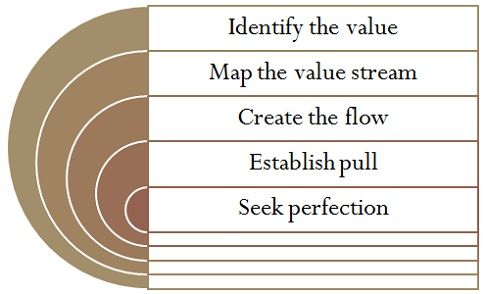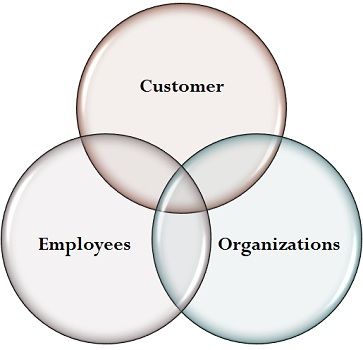Definition: Lean management refers to a technique developed with the aim of minimising the process waste and maximising the value of the product or service to the customer, without compromising the quality. It is coined by Toyota Production System, which is a part of lean thinking.
Lean is possible through distinct techniques such as flow charts, just in time, total quality management, workplace redesigning, and total productive maintenance. It focuses on delivering value to customers. A number of tools are deployed by the lean management system to link customer value to the process and people.
Principles of Lean
- Identify value: The value must be ascertained from the point of view of the ultimate customer by product family.
- Map the value stream: Ascertain all the steps involved in the value stream for each product family and then eliminating those steps that are not productive.
- Create the flow: Ensure that the steps which create value take place in a perfect sequence, so the product reaches the customer smoothly.
- Establish Pull: Once the flow is initiated, customers pull value from the next level activity.
- Seek Perfection: When the value is specified, value streams are ascertained, non-productive steps are eliminated and flow and pull are instigated. The process is started again and continue, till the perfection state is arrived, in which the perfect value is created with no waste.
Single Piece Flow is an ideal state of operation that replaces the batch sizes and lost production with working on one product at a time. Lean Manufacturing System aims at implementing one-piece flow in every operation possible. It can be achieved by eliminating the wastes such as overproduction, space, defects, unnecessary human motion, inventory, labour and so on.
Stakeholders of Lean Management
- Customers: For a firm, nothing can give more satisfaction than seeing your customers delighted, which can be due to the satisfaction they derive from the product or the customer service. To achieve this the issues and concerns of the customers are addressed first.
- Employees: Employees are the rank and file of the organisation, who are the most valuable asset of the organisation. When the employee is happy, he/she will also work for the organisation with great enthusiasm and efficiency that will help in making the organisation the best of its kind.
- Organisation: Organisation includes board members, the Chief Executive Officer, and the business owners. Add to that; it covers the policies, programmes and procedures and other implementation. A well managed and balanced organisation is capable of fulfilling customers requirements.
Lean management is philosophy, which intends to continuously eliminate the waste, in all the processes, through small and incremental improvement. It improves quality and reduces defects, as well as enhances the overall manufacturing flexibility. However, at times, it encounters certain limitations such as low productivity, prolonged cycle time, costly organisation, etc.



Momo B. Gray says
Lean is great. Thanks a lot. I hope I could go back to College to study Lean.
Snehal says
Thanks for the help. Great Article
Ewa Kasperiuk says
I believe that Lean can go far beyond manufacturing companies. We can apply this ideology to every aspect of our lives